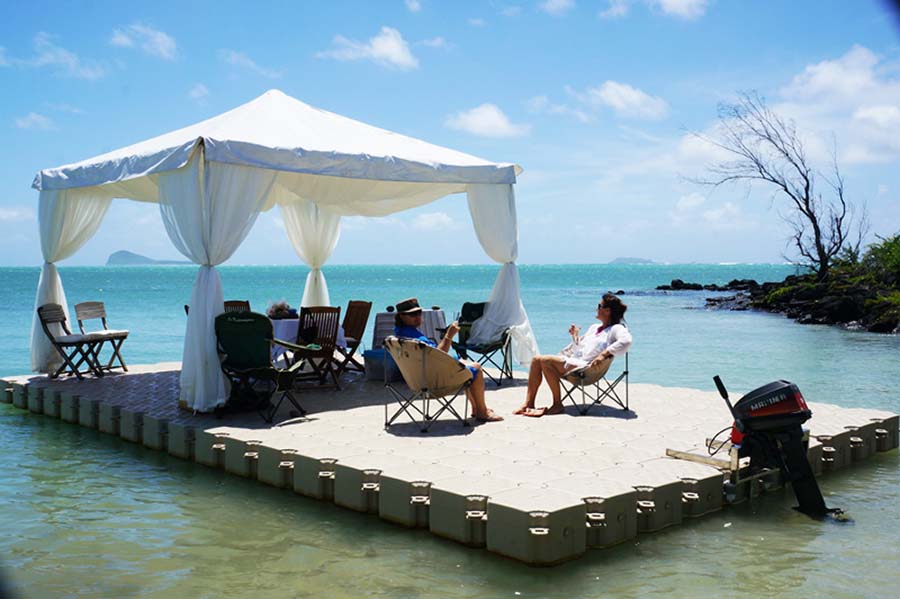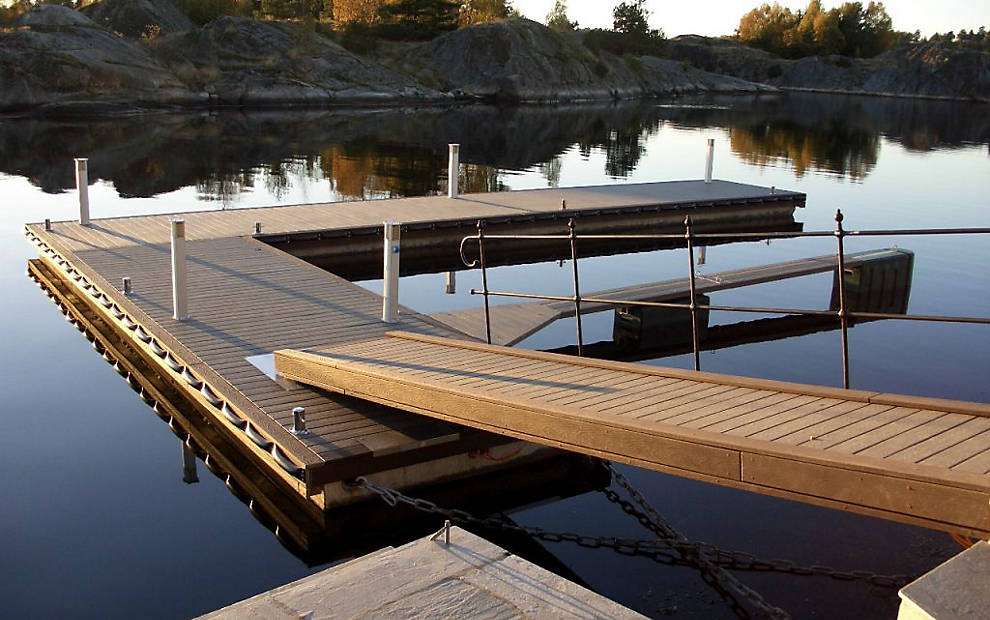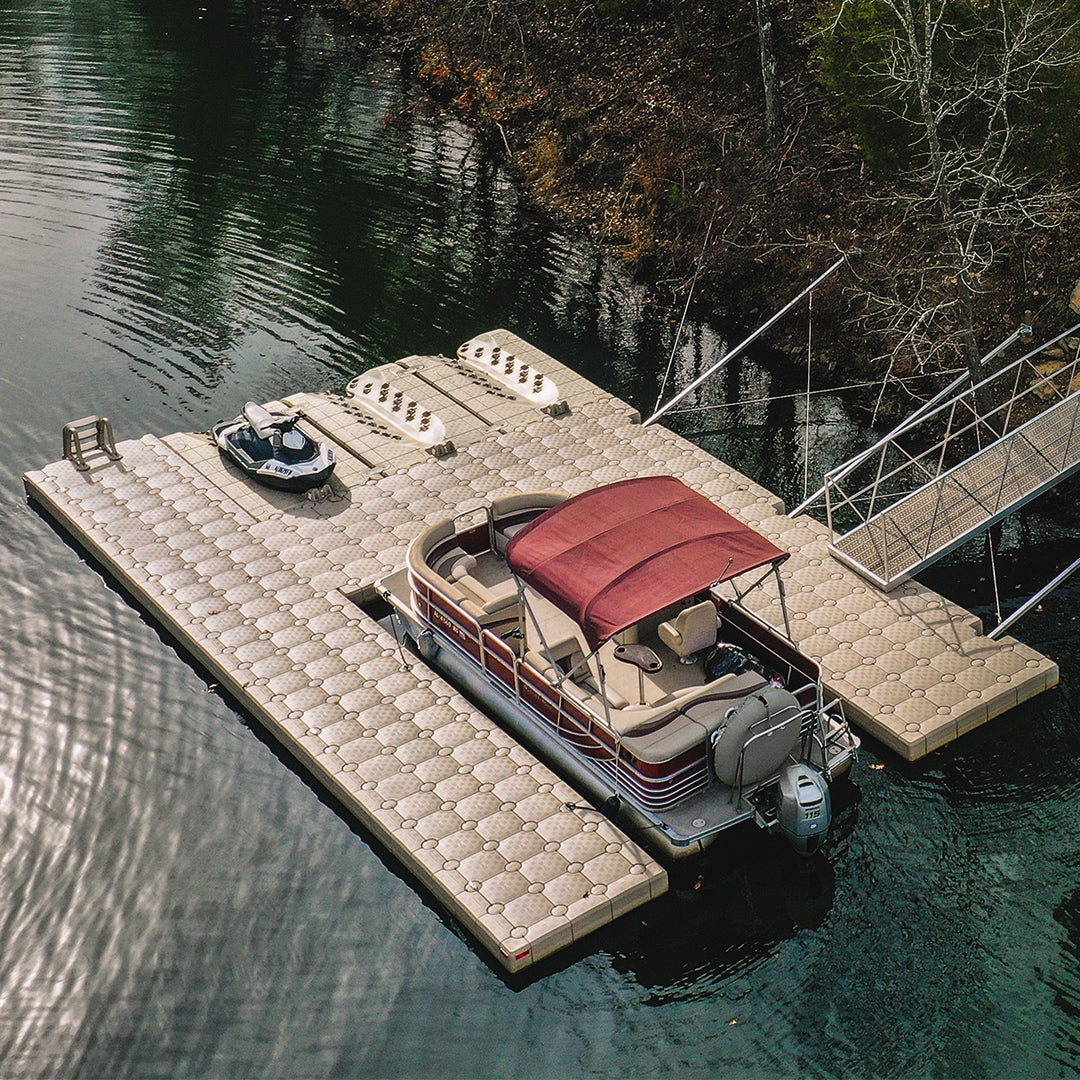Optimizing Your Outdoor Area with Specialized Floating Dock Solutions
Optimizing Your Outdoor Area with Specialized Floating Dock Solutions
Blog Article
Upgrade Your Waterfront With Durable Floating Docks
Upgrading your beachfront with resilient floating docks can dramatically boost both capability and aesthetics, giving a versatile option for different water activities. These structures are created to adjust to changing water degrees, guaranteeing security and access throughout the seasons. With a series of materials available, including low-maintenance choices and conventional wood, selecting the best dock can complement your personal design and fulfill useful needs. Understanding the nuances of installation and upkeep is essential for making certain longevity and efficiency. What aspects should you consider when making this investment?
Benefits of Floating Docks
Floating docks offer a multitude of benefits that boost their appeal for various maritime applications. One of the primary benefits is their versatility to altering water degrees - floating dock company. Unlike traditional fixed docks, floating docks surge and autumn with the trend, making sure consistent ease of access for boats and boat despite environmental problems. This feature dramatically lowers the risk of damages to vessels, as they stay securely tied even throughout variations in water depth.
In addition, floating docks are much easier to transfer and set up, supplying flexibility for short-lived or seasonal use. Their modular style enables for modification to fit certain requirements, whether for personal marinas, domestic watersides, or commercial applications.
Furthermore, floating docks develop very little disturbance to the marine environment, maintaining regional environments and minimizing the likelihood of erosion. They also supply enhanced safety and security for individuals, as their buoyant nature provides a much more forgiving surface than rigid frameworks.
Additionally, floating docks can assist in a diverse series of activities, such as angling, swimming, and recreational boating, making them a beneficial property for beachfront advancement. Their versatility and usefulness make floating docks a recommended selection for a variety of maritime tasks.
Selecting the Right Products
Selecting proper materials for floating docks is essential to their durability, efficiency, and total performance. When selecting products, think about aspects such as ecological exposure, maintenance demands, and architectural honesty. Usual products consist of wood, plastic, light weight aluminum, and composite options, each offering distinct advantages and downsides.
Wood, while aesthetically pleasing, calls for normal maintenance to protect against rot and degeneration. Pressure-treated timber can improve toughness, but it might still give in to water damage with time. Plastic floats, typically made from high-density polyethylene, are resistant to rust and call for minimal upkeep, making them an appealing choice for low-maintenance applications.
Light weight aluminum is an additional viable choice, known for its stamina and light-weight homes. It is immune to corrosion and can stand up to extreme weather condition problems, although it might be more pricey than other materials. Composite materials integrate the most effective characteristics of wood and plastic, supplying a low-maintenance and resistant option that resembles the appearance of wood without the linked downsides.
Eventually, the selection image source of product should line up with the planned usage, environmental factors to consider, and spending plan restrictions, making certain a useful and durable floating dock that meets your certain demands.
Installation Process Summary
The successful setup of a drifting dock counts on careful preparation and execution, making sure that it operates effectively in its intended atmosphere. The initial action entails assessing website problems, including water deepness, shoreline attributes, and dominating climate patterns, which will certainly notify the dock design and anchoring system.
Complying with the website evaluation, the following stage is to prepare the floating dock components. This includes putting together the frame, protecting floats, and attaching any type of needed hardware. It is vital to ensure that all connections are robust and waterproof to endure aquatic conditions.
Once the dock is put together, the installation process begins with positioning the dock in the water. This can involve a crane or other training equipment, particularly for bigger structures. Correct positioning is necessary for performance and safety and security.

Upkeep Tips for Long Life
Routine upkeep is essential for making sure the durability and optimum efficiency of a drifting dock. To achieve this, begin with routine assessments a minimum of twice a year, concentrating on the integrity of the dock's structure, including the flotation tools and attaching equipment. Look for indications of wear, corrosion, or damages, and resolve any issues promptly to prevent more deterioration.
Cleaning is an additional vital aspect of maintenance. Remove particles, algae, and barnacles from the dock's blog here surface area to avoid slippery conditions and preserve aesthetic charm. Use a soft brush and a mild detergent to prevent damaging the dock's materials.
Additionally, guarantee that the dock is appropriately anchored and protected to endure seasonal adjustments in water degrees and weather. Inspect the anchoring system for stability and make changes as needed.
Enhancing Your Outdoor Visual
To develop a visually appealing outdoor room, integrating a floating dock can considerably enhance the total visual of your beachfront building. Floating docks are not just useful however can additionally work as a striking prime focus that complements the natural surroundings - floating dock services. Available in different materials and layouts, these docks can be personalized to match your residential property's architectural design and landscape
The enhancement of decorative aspects, such as integrated lights or stylish barriers, better boosts the dock's visual allure. Take into consideration using all-natural timber finishes, which mix effortlessly with the atmosphere, or choosing for modern products like aluminum or composite decking that use a smooth, modern look.
Purposefully placing planters or seating areas on or around the dock can produce welcoming areas that motivate relaxation and satisfaction of waterfront sights. Additionally, integrating shades and structures that integrate with your landscape will create a natural visual throughout your outdoor area.

Final Thought

Updating your waterfront with resilient floating docks can significantly boost both capability and looks, giving a versatile solution for numerous water tasks. Unlike traditional set docks, floating docks increase and fall with the trend, guaranteeing constant availability for boats and boat no matter of environmental conditions.Selecting proper products for floating docks is vital to their longevity, performance, and total effectiveness.When the dock is constructed, the setup procedure begins with placing the dock in the water.In summary, floating docks deal numerous advantages, including adaptability to water level adjustments and a selection of material choices.
Report this page